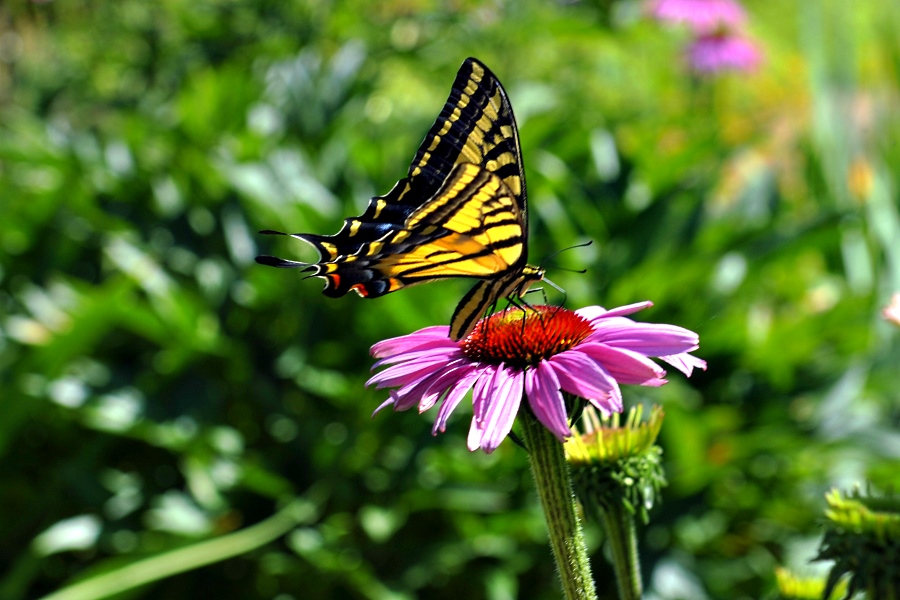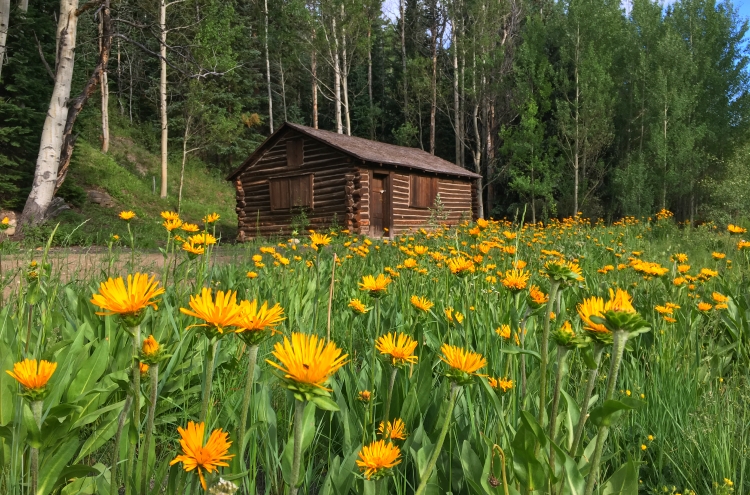Lawn & Landscape
Summit County Native PlantsA Guide to Summit County Native Plants for Beautiful Lawns & Landscapes
Summit County’s Native Plants for Landscaping
One of the best and most important aspects of creating beautiful landscapes (and lawns) is to take advantage of native plant species. Native plants species not only do well in the mountainous areas around Breckenridge, Frisco and Silverthorne, but thrive! Native plants and trees have evolved to live with the unique high altitude, local climate, various soil types and pests from native bacteria, fungi and animals. The good news is the process allows for a number of landscaping, lawn and gardening advantages. This article is about why we should utilize native species, and which species are native to Colorado, and more specifically to Summit County (Breckenridge, Frisco, Silverthorne, Dillon and Keystone).

What are the benefits of Native Plants?
Native plants have adapted with the local climate, soil, and pests. They tend to thrive without the need for excessive water and nutrients found with non-native plants.
Conserve More Water
Once plants become established, they need minimal irrigation beyond normal rainfall.
Low Maintenance Landscaping
Low maintenance landscaping methods are easier to apply to native plants adapted to the local environment. You can expect to use less water, minimal amounts of pesticides, less pruning, and less maintenance.
Less Pesticides
Native plants have developed their own defenses against a number of pests. Because many pesticides are generally toxic to most insects, beneficial insects such as native butterflies, become victims in the fight against lawn and garden pests. Reducing or eliminating pesticide allows natural “ecosystems” to develop and helps reduce pesticides out of our creeks and watersheds.
Wildlife Viewing
One of the best things about native gardens are their ability to attract native plants, birds, butterflies, beneficial insects, and other species to visit. Research has clearly indicated that our local wildlife prefers native plants opposed to non-native species.
Support Local Ecology
As development replaces natural habitats, planting gardens, parks, and roadsides with Colorado’s natives can provide a “bridge” to nearby remaining wildlands.

Here is a list of Summit County’s Native deciduous (shed leaves annually) trees that will help your landscape attract wildlife and provide a safe place your family, friends and pets to enjoy your yard.
- Thin-leaf Alder (Alnus tenuifolia)
- Quaking Aspen (Populus tremuloides)
- Narrowleaf Cottonwood (Populus angustifolia)
- Balsam Poplar (Populus balsamifera)
- Balm of Gillead (Populus balsamifera candicans)
- Mountain Birch (Betula occidentalis)
Remember to understand the requirements of each plant prior to planting. Each of these species, although native to Summit County will need different area climates to thrive. For example, a plant that thrives in full sun in Silverthorne or Dillon, may do poorly in Breckenridge or Keystone in the shade. Prior to planting some of the questions regarding conditions are:
- Are they drought tolerant or seasonally drought tolerant where I will be planting them?
- Do they require irrigation following planting?
- Those species that can tolerate seasonal moisture or drought are noted as SM-SD
- Do they have preferences such as partial shade, full sun, dry soil, etc?
- How will they behave once they have fully matured?
Here is a list of Summit County’s native evergreen trees that will help your landscape attract wildlife and provide a safe place your family, friends and pets to enjoy your yard.
- Subalpine Fir (Abies lasiocarpa)
- Engelmann Spruce (Picea engelmanni)
- Bristlecone Pine (Pinus aristata)
- Lodgepole Pine (Pinus contorta latifolia)
- Limber Pine (Pinus flexilis)
- Douglas Fir (Pseudotuga menziesi)
- White Fir (Abies concolor)
- Blue Spruce (Picea pungens)
Below is a list of Summit County’s shrubs that that will help you improve your landscape with low-maintenance native plants.
- Tall Western Sage (Artemisis tridentate ‘vasyana’)
- Bog Birch (Betula glandulosa)
- Common Juniper (Juniperus communis)
- Twinberry Honeysuckle (Lonicera involucrate)
- Shrubby Cinquefoil (Potentilla fruticosa)
- Alpine Currant (Ribes aureum)
- Woods Rose (Rosa woodsii)
- Native Raspberry (Rubus idaeus)
- Yellow Mountain Willow (Salix monticola)
- Wolfs Willow (Salix wolfii)
- Redberried Elder (Sambucus pubens)
- Silver Buffaloberry (Shepherdia Canadensis)
- Serviceberry (Amelanchier alnifolia)
- Siberian Peashrub (Caragana arborescens)
- Peking Cotoneaster (Cotoneaster acutifolia)
- Buffalo Juniper (Juniperus sabina)
- Mugo Pine (Pinus mugo)
- Chokecherry (Prunus virginiana)
- Antelope Brush (Purshia tridentate)
- Arctic Willow (Salix arctica)
- False Spirea (Sorbaria sorbifolia)
- Common Lilac (Syringa vulgaris)
Summit County’s perennials and herbaceous plants will help bring wildlife to your yard and add great natural colors to your landscape.
- Yarrow (Achillea spp.)
- Monkshood (Aconitum columbianum)
- Columbine (Aquiegia spp.)
- Kinnickinnick (Arctostaphylos uva-ursi)
- Aster (Aster spp.)
- Locoweed (Astragalus spp.)
- Larkspur (Delphinium spp.)
- Shooting Star (Dodecatheon spp.)
- Mock Strawberry (Duchesnea indica)
- Fireweed (Epilobium spp.)
- Aspen Daisy (Erigeron spp.)
- Gentian (Gentiana spp.)
- Sweetvetch (Hedysarum occidentale)
- Sunflower (Helianthella spp.)
- Rocky Mountain Iris (Iris missouriensis)
- Blueflax (Linum lewisii)
- Lupin (Lupinus spp.)
- Holly-grape (Mahonia repens)
- Bluebells (Mertensia spp.)
- Elephanthead (Pedicularis groenlandica)
- Penstemon (Penstemon spp.)
- Plox (Phlox spp.)
- Potentilla (Potentilla verna)
- Sulpher Flower (Eriogonum umbellatum)
- Stonecrop (Sedum spp.)
- Violets and Pansys (Viola spp.)
- Sage (Artemisia frigid)
- Silver Mound (Artemisia “Silver Mound”)
- Painted Daisy (Chrysanthemum leucanthenium)
- Shasta Daisy (Chrysanthemum maximum)
- Delphinium (Delphinium elatum)
- Sweet William (Dianthus barbatus)
- California Poppy (Escholtzia spp.)
- Wild Strawberry (Fragaria Americana)
- Gaillardia Daisy (Gaillardia aristata)
- Sweet Pea (Lathyrus odoratus)
- Maltese Cross (Lychinics chalcedonia)
- Peony (Paeonia officinalis)
- Iceland Poppy (Papaver nudicale)
- Oriental Poppy (Papaver orientalis)
- Pasque Flower (Pulsatilla patens)
- Black-eyed Susan (Rudbeckia vulgaris)
- Tansy (Tanacetum vulgaris)
